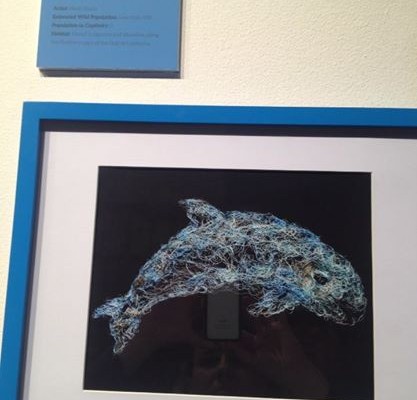By José Antonio Pérez
Rafael Pacchiano Alamán, Secretary of the Environment and Natural Resources, announced the Mexican government will be investing 4 million dollars into creating a sanctuary for the endangered vaquita marina in the Sea of Cortez. The official further explained resources will be sought from international specialists to help ensure reproduction of the species, which occurs every 2½ years, along with awareness campaigns both nationally and internationally in working to prevent consumption of the also endangered totoaba.
“Today, the principal cause of death of the vaquita marina is over exploitation of the totoaba, which is highly sought on the international black market,” emphasized Pacchiano.
The SEMARNAT official detailed via a rescue program, three specially trained dolphins of the U.S. Navy will seek out vaquitas marinas so that, with assistance from international specialists, they can be captured and safely taken to the sanctuary in the Upper Gulf of California.
Pacchiano Alamán emphasized the federal government is doing everything necessary to save the vaquita marina, which includes addressing fishing gear (changing nets and traps to prevent vaquita deaths), as well as work of the Armed Forces in preventing illegal totoaba fishing. They have made yearly investments of 540 million pesos in these actions.
Furthermore, the federal official has encouraged the population to not eat totoaba, which itself is endangered. It is thought the totoaba has aphrodisiac qualities, which Pacchiano argued it does not, stressing that totoaba fishing has led to deaths of the vaquita marina.
According to Octavio Aburto, research professor at Scripps Oceanographic Institute, even after creation of this sanctuary the vaquita reproduction will confront three challenges: difficulty in locating individual vaquitas whether by air or sea, low levels of stress the vaquita can take in being manipulated and pursued, as well as low genetic diversity given its low numbers.
It is believed the vaquita can begin to reproduce at 6. The female only has one baby during the spring, and probably only every two years or more. The oldest vaquita found to date has been a female whose estimated age was 21. Or rather, a female may only have between 5 to 7 young during her entire reproductive life.
Along with this low reproductive rate being a factor for its reproduction, it is believed only 20% of living vaquita are female.
Aburto acknowleged over the last 10 years, authorities have wasted millions of pesos on measures that do not address the root problem: dependence on fishing and lack of opportunities.
Three years ago, international experts projected the death rate among the vaquita would imply its extinction by 2018. With only a short time to go before this period, multiple governmental programs have been unable to halt the death of the vaquita.
